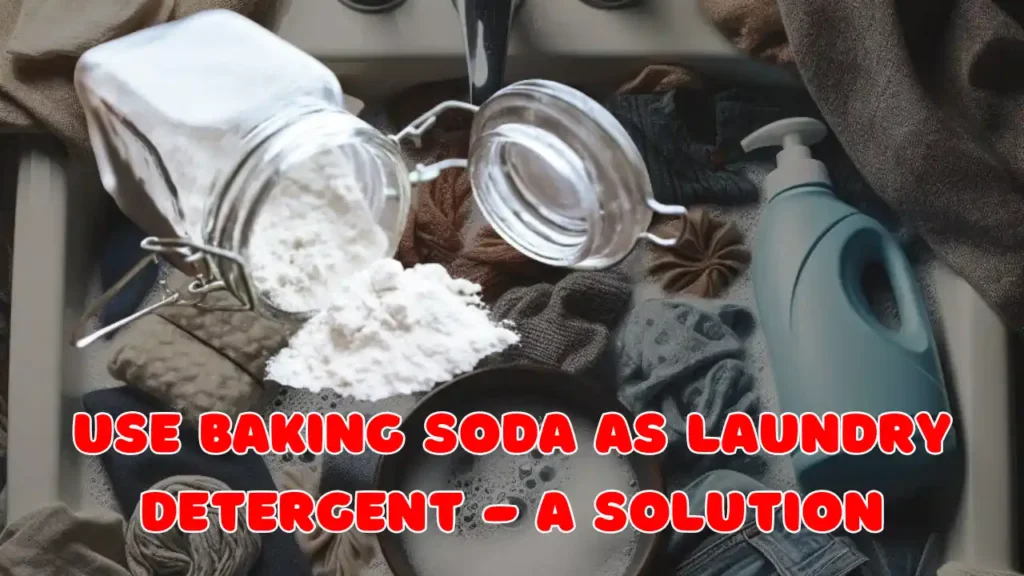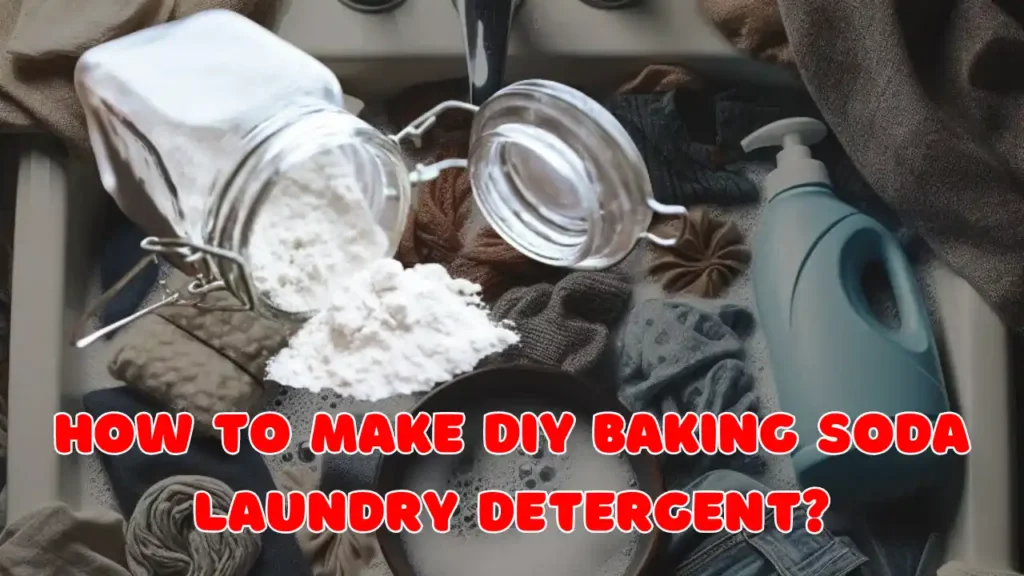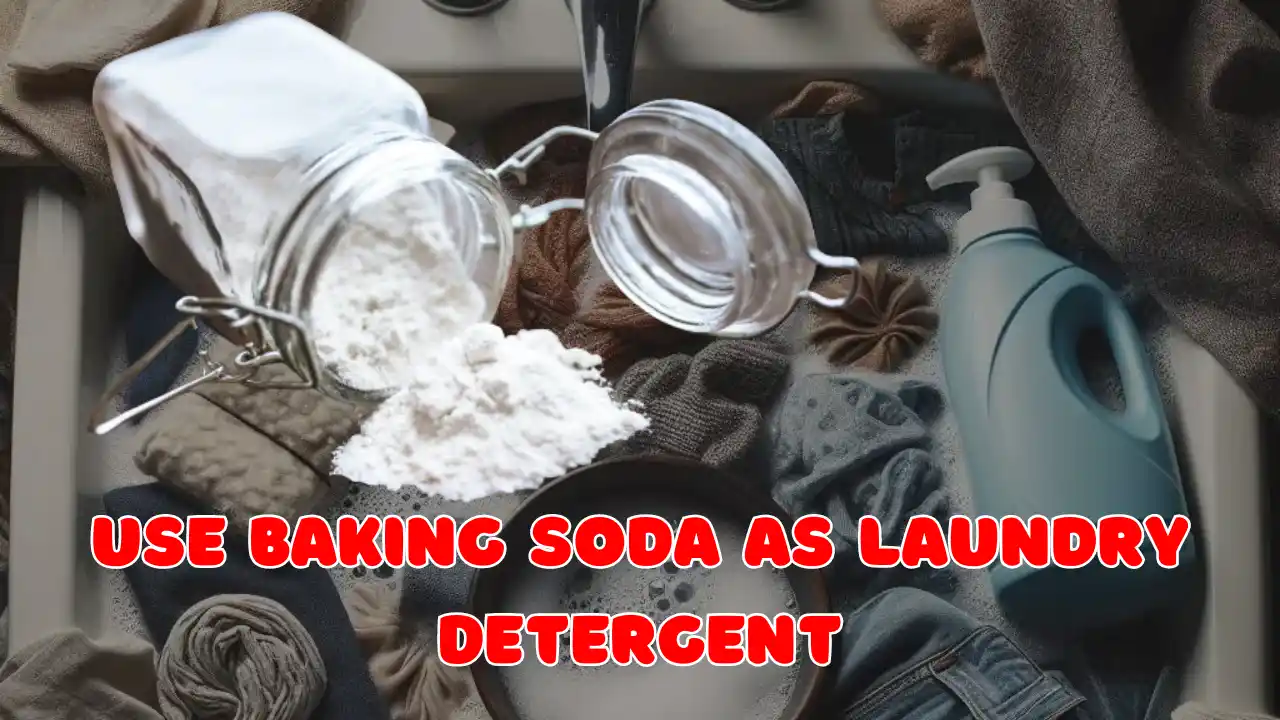Use Baking Soda as Laundry Detergent – An Affordable and Effective Option
Have you ever found yourself facing a pile of dirty laundry with an empty detergent bottle? We’ve all been there – frantically digging through the laundry room shelves hoping to discover an overlooked detergent pod. When the usual detergent has run out, baking soda can be an affordable and handy substitute to get you through until the next shopping trip.
Baking soda is a versatile household staple with many cleaning and deodorizing properties. With some clever tips and tricks, you can use baking soda to wash laundry effectively in both top and front-loading machines. While it may not have the same cleaning power as mainstream detergents, baking soda gets clothes clean, saves money, and is gentler on fabrics.
Table of Contents
Benefits of Washing Clothes with Baking Soda
While designed to bake, baking soda also bubbles up a storm when mixed with water. These sudsy abilities make it a surprisingly good (if mild) laundry detergent. Here are some notable benefits:
Natural and Chemical-Free
Conventional laundry detergents often contain synthetic fragrances, dyes, preservatives, and foaming agents that can irritate sensitive skin. The ingredients also get released into wastewater. Baking soda, on the other hand, is a natural mineral that breaks down completely in water. Using this non-toxic alternative keeps harsh chemicals away from your clothes and the environment.
Cost-Effective
A box of baking soda costs just a few dollars and lasts for months. Using tablespoons instead of pre-measured pods or caps can save you serious money on laundry costs over time. Sprinkling in some baking soda when you’ve run out of regular detergent lets you wash that last dirty load without running to the store.
Gentler on Fabrics
The less caustic chemical composition of baking soda makes it less harsh on clothes than laundry detergent. As such, it offers a sensible cleaning option for delicate materials like silks, wool, and baby clothing. Baking soda washes leave fabrics soft and help retain colors better than bleach or other oxidizing detergents.
Deodorizes and Whitens
While lifting dirt and oils, baking soda also absorbs unpleasant odors trapped in the fabric fibers. Its alkaline properties help brighten dingy whites and can lift some light stains. For really smelly gym clothes or cloth diapers, baking soda can help freshen them up between deeper cleaning cycles.
Use Baking Soda as Laundry Detergent – A Solution

Tired of harsh chemicals and expensive laundry detergents? Baking soda, the pantry staple, offers a green, affordable, and surprisingly effective alternative for sparkling clean clothes! This versatile wonder tackles dirt, odors, and even stubborn stains, leaving your laundry fresh and fabulous. Dive into this comprehensive guide and discover how baking soda can transform your laundry routine:
Dethroning the Detergent Giants:
- Natural Powerhouse: Ditch the chemical cocktails! Baking soda boasts natural deodorizing and cleaning properties, perfect for sensitive skin and eco-conscious lifestyles.
- Budget-Friendly Hero: Skip the laundry aisle markup! Baking soda is significantly cheaper than conventional detergents, offering a guilt-free clean.
- Gentle Yet Effective: Don’t underestimate its cleaning power! Baking soda lifts dirt and neutralizes odors without fading colors or damaging fabrics.
Harnessing Baking Soda’s Laundry Magic:
- Boost Detergent Power: Add 1/2 cup of baking soda to your usual wash cycle for an extra cleaning punch. It enhances detergent’s effectiveness and brightens white and light-colored garments.
- Odor-Banishing Warrior: Combat pesky laundry smells like sweat, smoke, and mildew! Pre-soak smelly clothes in a solution of 1 cup baking soda and warm water for an hour before washing.
- Stain-Lifting Ally: Tackle light stains like grass, blood, and coffee with a paste of baking soda and water. Apply directly to the stain, let sit for 15 minutes, then wash as usual.
Pro Tips for Optimal Results:
- Know your fabrics: While gentle, baking soda can be abrasive on delicate fabrics like silk or wool. Test on a hidden area before applying directly.
- Hard water hero: Hard water can lessen baking soda’s effectiveness. Add 1/4 cup of white vinegar to the rinse cycle to neutralize minerals and soften fabrics.
- DIY Detergent Fun: Craft your own laundry detergent! Mix baking soda with borax, washing soda, and essential oils for a personalized, eco-friendly cleaning solution.
Beyond the Wash Cycle:
- Freshen Up Mattresses: Sprinkle baking soda on your mattress, let it sit for 30 minutes, then vacuum for a refreshingly odor-free sleep.
- Deodorize Carpets: Combat carpet mustiness by sprinkling baking soda and letting it sit for an hour before vacuuming.
- Clean Sports Gear: Remove sweat and grime from gym clothes and sports equipment with a baking soda soak.
Embrace the Baking Soda Revolution:
Let baking soda revolutionize your laundry routine with its powerful cleaning, natural goodness, and budget-friendly charm. Share your baking soda laundry hacks in the comments below and join the green cleaning movement!
How to Make DIY Baking Soda Laundry Detergent

Wondering exactly how much baking soda to pour into the washing machine? While a simple sprinkle will work in a pinch, combining baking soda with some complementary acidic ingredients better activates its cleaning power.
Here is an easy DIY laundry detergent recipe with baking soda:
Ingredients:
- 4 cups baking soda
- 2 cups borax (optional – see notes below)
- 2 cups white vinegar or 2 TBSP lemon juice
- Essential oils (optional)
- Laundry booster enzymes (optional)
Directions:
- Mix the baking soda and borax powder together in a container with a lid. Borax helps amplify cleaning and deodorizing effects but can be skipped to make a pure baking soda detergent.
- Add the vinegar or lemon juice and shake well until fully incorporated. The acid reacts with the base baking soda to produce salt, water, and carbon dioxide bubbles that boost cleaning action.
- For fresh scents, add a few drops of essential oils like lemon, lavender or tea tree. Look for oils safe for use on laundry.
- To break down tough protein-based stains, try adding laundry enzyme booster packets.
- Use 1-2 tablespoons per average load of laundry, adding to the drum before clothes. Adjust amounts as needed based on load size, soil levels, and machine type.
That’s it – a simple 4 ingredient laundry detergent alternative using items you likely have in the pantry!
The DIY powder keeps well in an airtight container. Give it shake before scooping out the powder to evenly distribute the bubbly activated ingredients.
Make sure to test this detergent on an inconspicuous area of any delicate or brightly colored fabrics before doing a full wash, as the vinegar and baking soda can very occasionally cause fading issues on some dyes.
Tips for Using Baking Soda in High Efficiency and Standard Washers
Front loading high efficiency (HE) machines and classic top-loading machines have some key differences that impact how to best use a baking soda detergent.
High-Efficiency Washers
High-efficiency washers use less water than conventional models, so diluting and rinsing detergent residues is more difficult. Here are some tips for HE washing machines when using baking soda:
- Use no more than 1-2 TBSP baking soda per average load following the manufacturer’s sizing recommendations. Over-sudsing can lead to residue sticking on fabrics and mechanical problems.
- Mix the baking soda with borax and an acid activator into powder form before adding to the drum. Liquid forms dilute less efficiently.
- Choose the high water level setting, if your machine has one. More water better dissolves the powders.
- Run an occasional cleaning cycle to prevent buildup and keep the washer fresh. White vinegar in the detergent cup followed by an empty rinse cycle helps dissolve sticky soda residues.
Standard Top Loading Machines
Standard washing machines use more water and handle excess suds well. Here are some tips for top loaders:
- Use up to 1/4 cup baking soda for average loads, adjusting up for larger or heavily soiled loads. Agitation helps dissolve more soda than HE models can handle.
- Add the baking soda directly to the wash water for fuller dissolution rather than adding powder to the drum.
- Feel free to also add a splash of vinegar to the wash water to react with the soda and boost cleaning bubbles.
- Run a rinse-only cycle after heavily loaded soda washes to help remove residues.
Regardless of washing machine type, adding baking soda too quickly to very hot or very cold water can cause clumping. Mix the powder in gradually and give it a minute to dissolve fully before adding clothes.
Effectively Remove Stains with Baking Soda
While it can help lift some stains, baking soda alone often doesn’t pack enough of a punch on set-in oily stains. To better tackle pesky spots, turn to baking soda boosting pre-treatments before washing.
Baking Soda Paste
Mix baking soda with just enough water to form a paste. Gently rub it onto stained areas and let sit for at least 30 minutes before washing as usual. The paste helps pull stain pigments from the fabric over time.
Baking Soda and Vinegar
For heavier stains, follow up a baking soda paste scrub with another classic cleaner from your pantry – distilled white vinegar. After rubbing in the soda paste, spritz the stained spots lightly with undiluted vinegar. It will foam and bubble as it reacts! Let sit for another 10-30 minutes before washing with the baking soda detergent. The added acid punch helps activate more stain-fighting power from the baking soda.
Baking Soda and Hydrogen Peroxide
As another alternative, mix baking soda with some hydrogen peroxide instead of vinegar and work it into stains. The peroxide provides bleaching action to help lift discoloration. Make a thinner paste with just 1 part hydrogen peroxide to 2 parts baking soda and scrub it inadequately. Rinse thoroughly after letting it sit for at least an hour before washing.
Baking Soda and Borax
For protein-based stains from food, grease, sweat, or blood, try making a stain-busting paste with equal parts baking soda and borax powder. The borax brings additional odor removal and stain-fighting properties. Follow the same method of applying like a paste, letting sit for 1 hour or more, then washing afterward.
When Not to Use Baking Soda on Clothes
While suitable for most stable-dyed colorfast fabrics, there are a few laundry instances when it’s better to avoid using baking soda:
- Brightly dyed clothes prone to running – baking soda can shift more unstable dyes
- Delicate silks and wools – stick to cold water washes, and skip the vinegar
- Antique linen, lace, or hand-woven fabrics – test integrity in an inconspicuous area first
- Water-repellent outerwear – can reduce durable water resistance coatings with repeated use
- Gym clothes with spandex – can degrade elasticity over time with harsher detergents
Vinegar forms an integral part of baking soda detergent recipes, but it (along with lemon juice) does contain weak acids that very occasionally shift dyes. Most modern laundry can handle some intermittent DIY soda washes, but it’s still smart practice to test colored fabrics in an unseen spot before doing full load.
When in doubt, opt for a fragrance and dye-free liquid baby detergent instead of baking soda mixes on delicates and expensive clothing items. The gentler hypoallergenic formulations better preserve special fabrics.
Frequently Asked Questions
Still, wondering about the finer details of washing with baking soda? Here are answers to some common questions:
Is baking soda as effective as detergent for stains?
No – while baking soda can help lift some fresh stains, especially when combined with vinegar or hydrogen peroxide, it does not work as powerfully as enzyme-based detergents on heavily soiled and set-in stains. For badly stained laundry, go ahead and use your regular detergent!
How much baking soda do you put in a front load washer?
Use no more than 1-2 tablespoons of baking soda per average size load in an HE machine. Measure carefully, as too much can lead to residue build-up issues over time.
Why put vinegar and baking soda in the wash?
Good question! The acid vinegar reacts with the alkaline baking soda to form water, salt, and carbon dioxide bubbles. This chemical reaction better activates soda’s cleaning and deodorizing abilities so clothes get extra clean and fresh.
Can I put baking soda and vinegar in the washing machine at the same time?
Yes, adding some vinegar and baking soda together in the wash water creates helpful bubbly agitation. Just avoid pouring either ingredient directly onto any clothing, as concentrated contact can damage delicate fabrics. Better to mix into the water first.
What ratio of baking soda to vinegar in laundry?
For top loaders, a wash water ratio of approximately 1 cup baking soda to 2 cups vinegar works well. Adjust amounts as needed based on load size and soil level. In front load HE machines, stick to no more than a few tablespoons total mixed into the detergent compartment before adding clothes.
Conclusion: Revive Laundry with Baking Soda!
Hopefully, you now feel confident to grab that box of baking soda out of the pantry next time you face laundry emergencies! Either sprinkled on its own or made into an easy 4-ingredient detergent powder, baking soda cleans clothes effectively with an eco-friendly formula that kinder to fabrics and budgets.
Boost stain-fighting powers by letting items soak in pre-treatment pastes blended with vinegar, hydrogen peroxide or borax. While not as strong on heavy soiling as commercial detergents, this chemical-free cleaning staple freshens up most average laundry loads in a pinch. Just follow the right usage tips for your washing machine model and clothing type.
So rather than dragging a hamper to the laundromat the next time you run out of detergent, give baking soda a bubbly try! Your wallet and environmental conscience will thank you.








